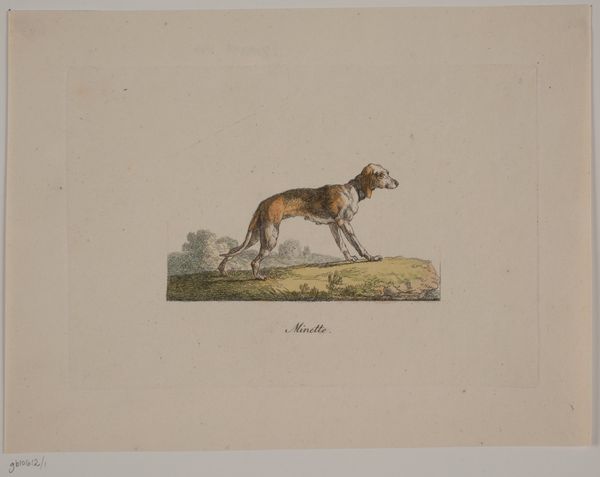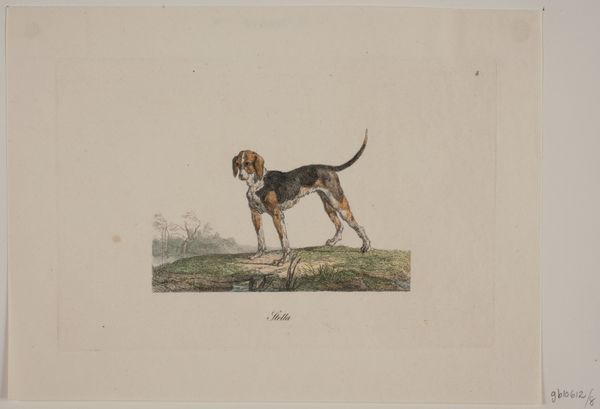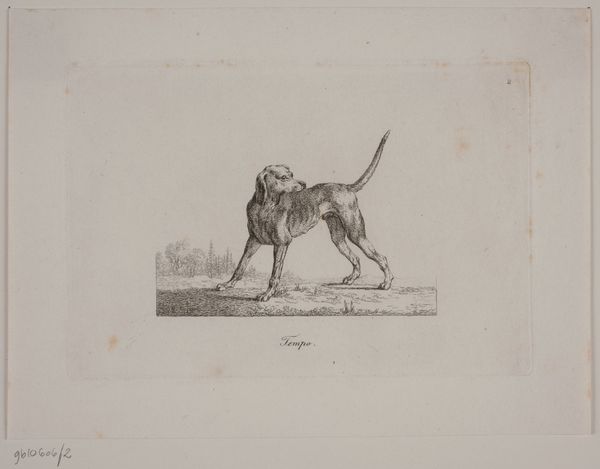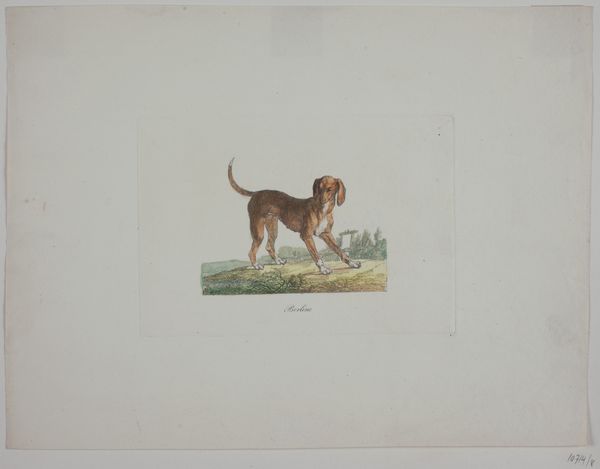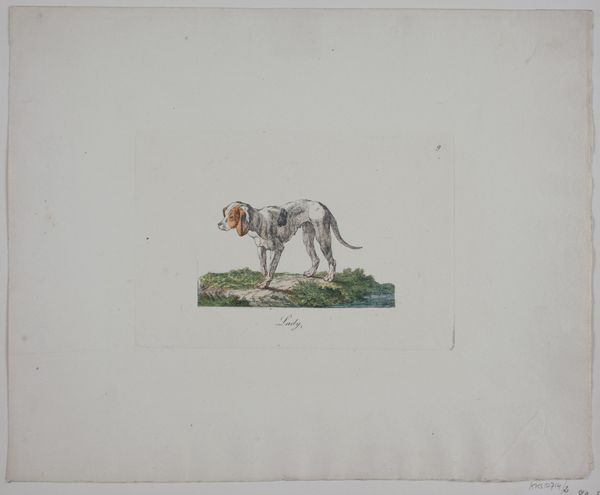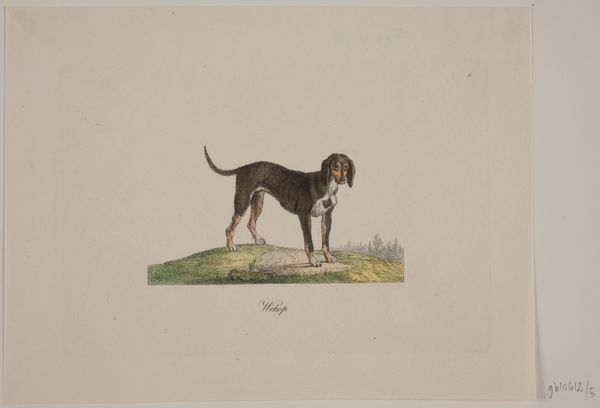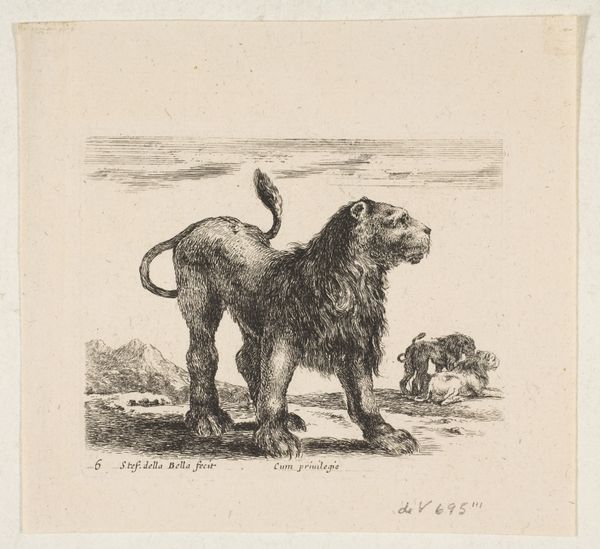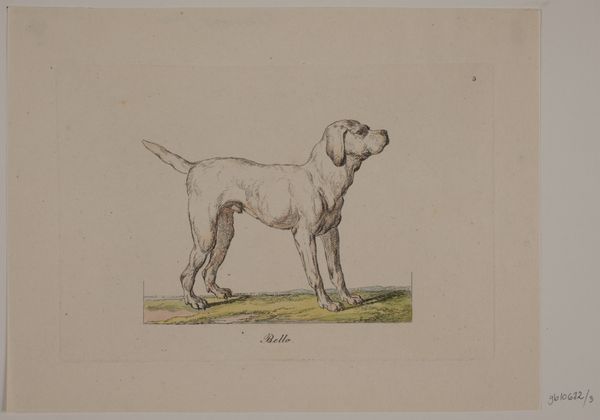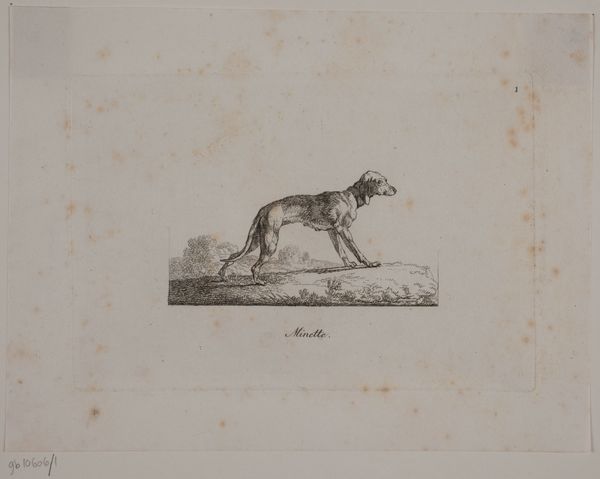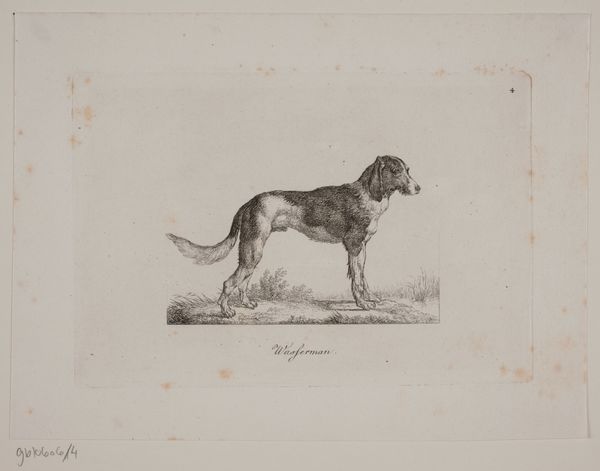
print, engraving
#
portrait
# print
#
landscape
#
figuration
#
romanticism
#
engraving
Dimensions: 110 mm (height) x 162 mm (width) (plademaal)
Curator: Instantly, there’s a kind of alert alertness in this image that's compelling; a readiness embodied by the animal’s taught stance. Editor: And that stance is beautifully captured in Christian David Gebauer’s "Tempo," an 1821 engraving. What makes this piece particularly interesting is its blend of detailed animal portraiture with elements of romantic landscape. Consider, how the choice of the printmaking technique—engraving— speaks to ideas about reproduction and distribution. Curator: Indeed! We should ask, was this meant for scientific documentation, or something else entirely? The meticulous rendering speaks of keen observation. But for whom was this labor carried out and intended for consumption? Editor: Absolutely. Let's not forget the context of the time; romanticism saw the rise of new concepts related to domesticity and the idealization of nature. Consider the role animals were seen to play in this ideological landscape, and the subtle ways "Tempo" might mirror shifting societal views of loyalty and companionship through the act of animal representation. Curator: That's an important consideration, since in art production at that time we see the animal portrait being treated not as an expression of nature, but of commodity and status. How much did those considerations impact Gebauer as an artist? Editor: I agree. Viewing it through that lens helps question conventional boundaries between genres of landscape and figuration, offering new narratives on historical attitudes of human interactions with the natural world. Curator: It seems so unassuming at first, but probing into its materiality and context reveals a complex web of relations surrounding the work. I come away with a deep appreciation for its construction, how each deliberate stroke creates something more layered. Editor: Right, the process transforms into content as this humble dog print offers compelling avenues for cultural discussion; in "Tempo" the print doesn't just illustrate—it provokes.
Comments
No comments
Be the first to comment and join the conversation on the ultimate creative platform.

